
[ad_1]
Politics
/
August 13, 2024
If Tim Walz becomes vice president, Minnesota’s lieutenant governor would become governor and immediately make history.
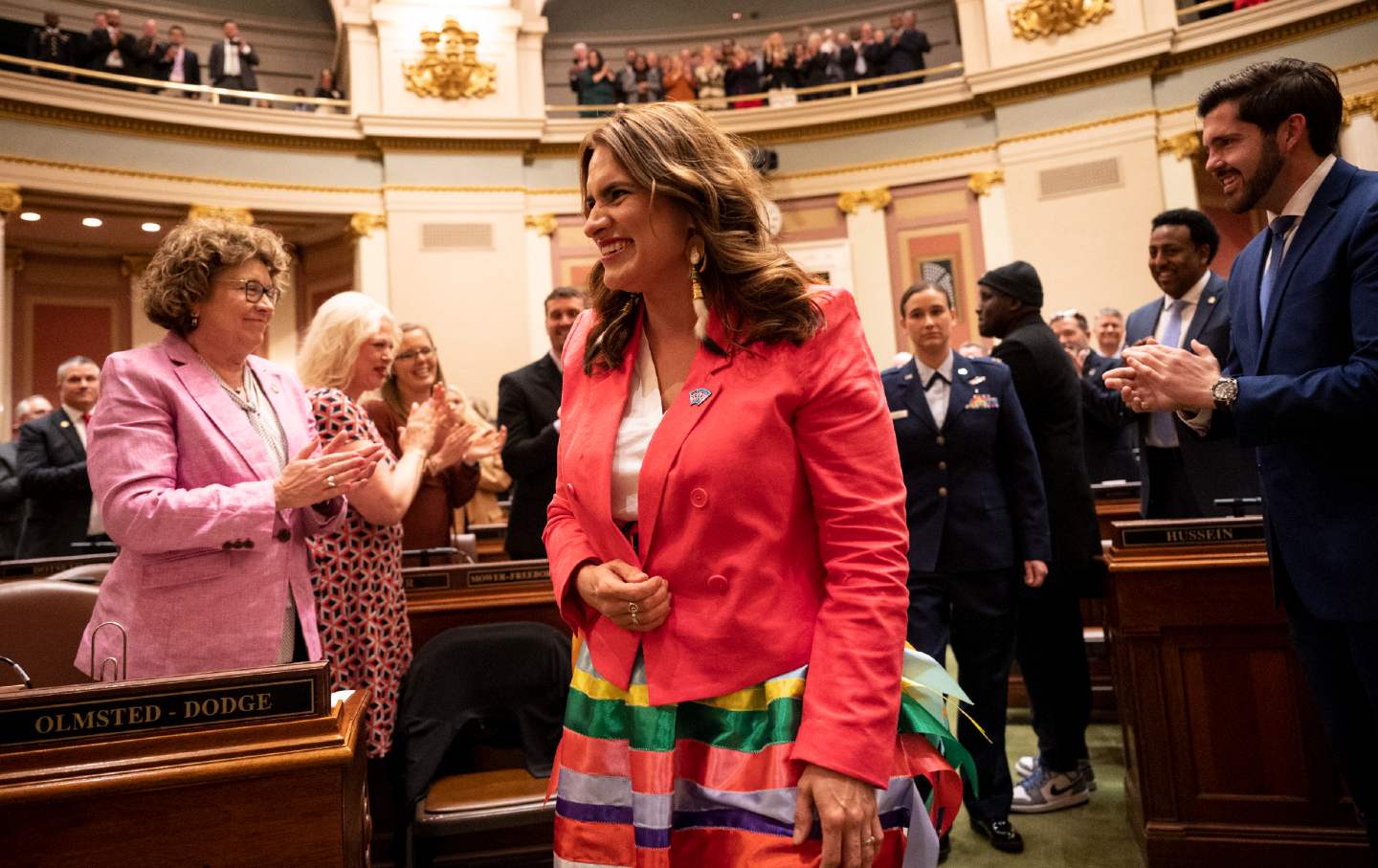
Minnesota Lieutenant Governor Peggy Flanagan, of the Democratic-Farmer-Labor Party, is welcomed into the House chambers for the State of the State address on April 19, 2023, at the Minnesota State Capitol in St. Paul.
(Aaron Lavinsky / Star Tribune via Getty Images)
“Jesus,” I said, “what the hell is that?”
About 10 feet behind the crowd, an enormous Darth Vader–clad cosplayer gripping a red lightsaber emerged from over the hill. He wore a black cloak and a metal headdress with LED lights, and he dragged a giant papier-mâché head of a Native American behind him. It was a scene reminiscent of one of those nasty John Wayne westerns but with a sci-fi spin.
Several of the young Natives immediately rushed the costumed man. One 20-something Ojibwe man asked, “What the hell do you think you’re doing?”
Current Issue
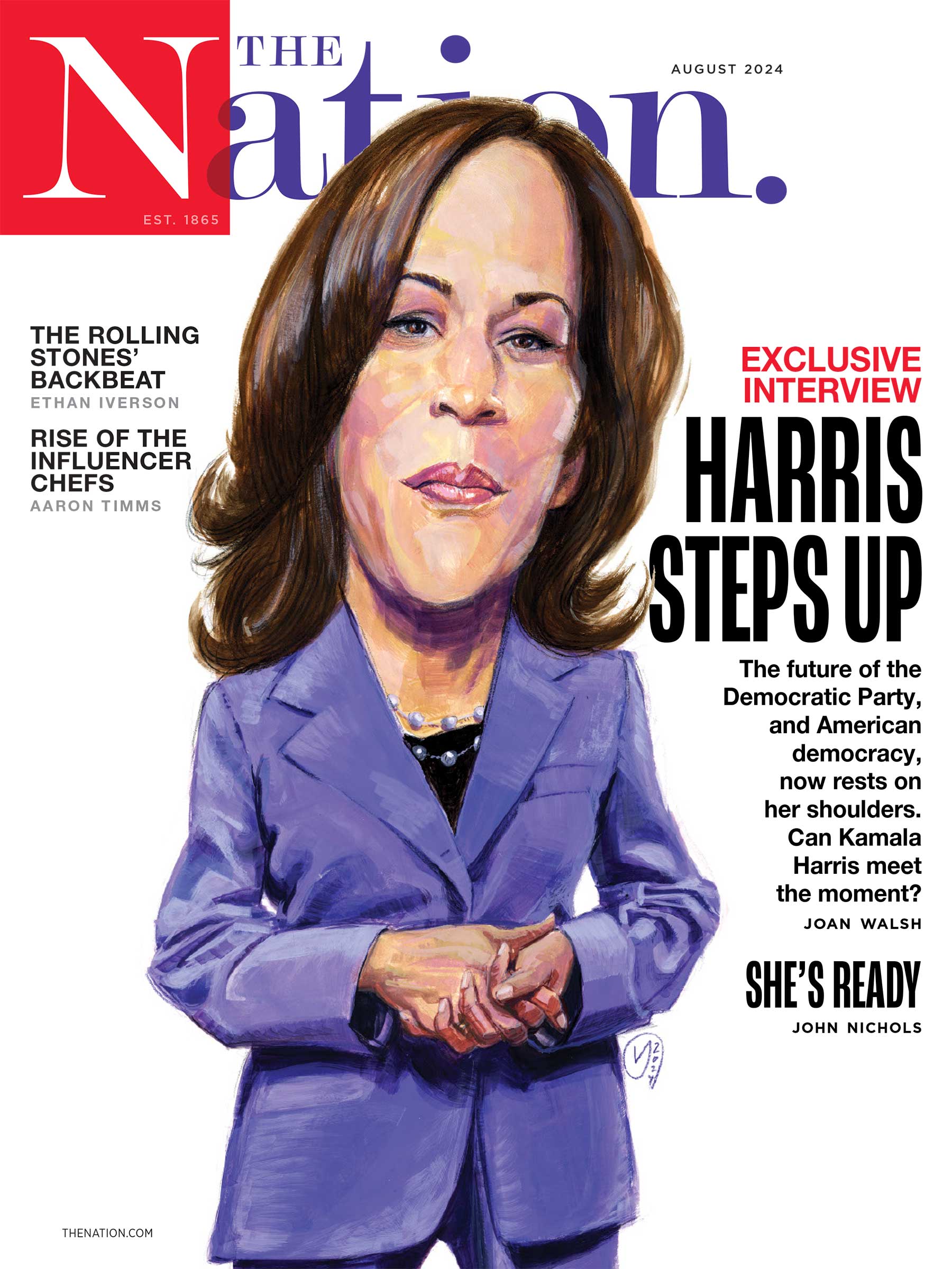
“Well, what we’re all here to do,” the cosplayer said. “Ending Indian mascots.”
“It looks like you’re dragging the head of a dead Native!” the guy shouted. “So, stop!”
It was October 2019, and hundreds of Indigenous people and our allies had gathered at US Bank Stadium in downtown Minneapolis to protest the then-racist name of the Washington NFL team, the Redskins. Suddenly, to my left, appeared Peggy Flanagan, the Democratic lieutenant governor of Minnesota and an enemy to the dehumanization of Indigenous peoples in the form of Indian mascots.
We approached one another. “Nice to meet you,” she said. “I like your work.”
“I like your work,” I responded and shook her hand. Flanagan, an Ojibwe from the White Earth Nation in northwest Minnesota, was one of the afternoon’s speakers, and it was soon time for her to take the stage. The crowd cheered at the sight of her.
“The term [redskins] comes from the scalps—where people were essentially paid a bounty in cash for the scalps of Native American men, women, and children,” she said at the dais, surrounded by other Ojibwes, Dakotas, and Lakotas.
Ad Policy
Fast-forward five years and the name of the Washington NFL team is no more. Meanwhile, Flanagan, who once trained oodles of liberals at Camp Wellstone to run for office (including her boss, Governor Tim Walz) could become the first female Indigenous governor in US history.
Flanagan, who grew up on the west side of Minneapolis in St. Louis Park, graduated from the University of Minnesota with a degree in American Indian studies and child psychology. In 2015, she was elected to the House of Representatives, where she championed legislation that benefited children, the poor, and people of color. Flanagan paired with her fellow legislators to launch the state’s first POCI (People of Color and Indigenous) Caucus.
Popular
“swipe left below to view more authors”Swipe →
And as lieutenant governor, she even advocated changing the state’s flag, which once depicted the image of a white man tilling the soil as a Native American flees on horseback. “It’s literally a Native person being driven off their land,” she said at the time. “It’s horrific.”
Today, the flag displays a star with a light-and-dark-blue background. The new design is supposed to represent the North Star, the abundance of lakes, the land, and the state bird, the loon, according to Minnesota Secretary of State Steve Simon.
On Wednesday, Flanagan, 44, called me from her car, having just left the state’s annual Farm Fest, a two-day shindig celebrating the state’s farms, farmers, and agribusinesses. I asked her what she thought about the election and about the possibility of becoming the Minnesota governor. She immediately praised the Indigenous leaders, especially women, who worked for decades to pave the way for the next generation. She spoke of Indigenous representation and the old ways that non-Natives are only learning today.
“Dominant culture is just catching on to something we’ve always known, which is that Native women have been leaders since time immemorial,” she told me. “And when we do good work and we deliver, everybody’s lives improve.”
This is true. Historically, for many tribal nations and for literally thousands of years, women chose the chief and sat on various councils. This disturbed early European male colonists, who were not used to seeing a woman sitting across from them, let alone talking politics and making decisions on behalf of the tribe.
In the car, Flanagan was happy to be out of the sun and chug some iced water. I mentioned the reality that we’re the smallest racial minority in our own ancestral land and rarely included in national conversations, especially in political discourse, and then I asked, “How would you describe Indigenous peoples to those who aren’t acquainted or familiar with the Native of today?”
It was, she told me, a heavy question. “We’re beautiful. We are survivors. We’re caretakers of our communities. We’re teachers and scientists, and we’ve always been here,” she said. “We are contemporary people, and of course we’re not a monolith.”
Currently, there are 574 federally recognized tribes, and each tribe and nation is unique in language, politics, customs, cuisine, and spiritualities. Not every tribe lived in tipis and not every nation wore eagle-feather headdresses.
Flanagan lamented, though, that there’s still a need to state the obvious and teach such things, like an “Indigenous 101” every year. She recalled a time when a colleague approached her gobsmacked having just learned that she was, in fact, Native.
“I thought you were all dead!” her colleague, an elected official in the Minnesota State House of Representatives, said at the time.
Not really knowing how to respond, Flanagan shouted, “Surprise!” She considers that exchange, while appalling, “a really important moment” to remind non-Natives that we are still here. “It illustrated the need for people to be in relationship with us,” she said.
Early Tuesday, when news broke that Kamala Harris had chosen Governor Tim Walz as her running mate, Indigenous folks across the country were abuzz, and not because Harris had chosen Walz but because, in accordance with Minnesota’s Constitution, should the Harris-Walz ticket beat out Trump-Vance, Flanagan would assume the governorship and immediately create history.
Celebrity chef Sean Sherman—an Oglala Lakota who owns and operates Owamni, a restaurant in Minneapolis that boasts “‘decolonized’ cuisine” (berries, bison, wild rice, and other foods indigenous to this continent)—gushed at the idea of having a Native female representing his state.
Sherman praised Flanagan for making sure Indigenous peoples are not ignored, that they are seen and heard at the legislature. She has worked diligently to secure economic opportunities for the state’s first peoples. Sherman said that his work “trying to normalize Indigenous foods and create access and education, reconnecting with our ancestral foods and medicines would be much harder” without people like Flanagan, Interior Secretary Debra Haaland, who’s Laguna Pueblo, and Representative Sharice Davids of Kansas, who is of the Ho-Chunk Nation.
More on Indigenous Issues:
Now, a half decade after the protest where Flanagan and I met, the country and the electorate are quickly learning who Flanagan is—the mom, the lieutenant governor, the former member of the Minneapolis school board, and, quite possibly, the next governor of Minnesota. She told me she didn’t think she’d see a woman of color, let alone a Native, in that role, in her lifetime.
Should that come to pass, there will be a thunder of Indigenous jubilation across the United States.
“When I am with other Native folks, and especially young Native girls, I tell them to take up as much space as you can,” she said. “Physically take up space, because you absolutely have the right to be there.”
This is, after all, Native land.
Can we count on you?
In the coming election, the fate of our democracy and fundamental civil rights are on the ballot. The conservative architects of Project 2025 are scheming to institutionalize Donald Trump’s authoritarian vision across all levels of government if he should win.
We’ve already seen events that fill us with both dread and cautious optimism—throughout it all, The Nation has been a bulwark against misinformation and an advocate for bold, principled perspectives. Our dedicated writers have sat down with Kamala Harris and Bernie Sanders for interviews, unpacked the shallow right-wing populist appeals of J.D. Vance, and debated the pathway for a Democratic victory in November.
Stories like these and the one you just read are vital at this critical juncture in our country’s history. Now more than ever, we need clear-eyed and deeply reported independent journalism to make sense of the headlines and sort fact from fiction. Donate today and join our 160-year legacy of speaking truth to power and uplifting the voices of grassroots advocates.
Throughout 2024 and what is likely the defining election of our lifetimes, we need your support to continue publishing the insightful journalism you rely on.
Thank you,
The Editors of The Nation
Simon Moya-Smith
Simon Moya-Smith is a freelance reporter who’s written for Columbia Journalism Review, The Cut, and Lonely Planet, among other outlets.
More from The Nation
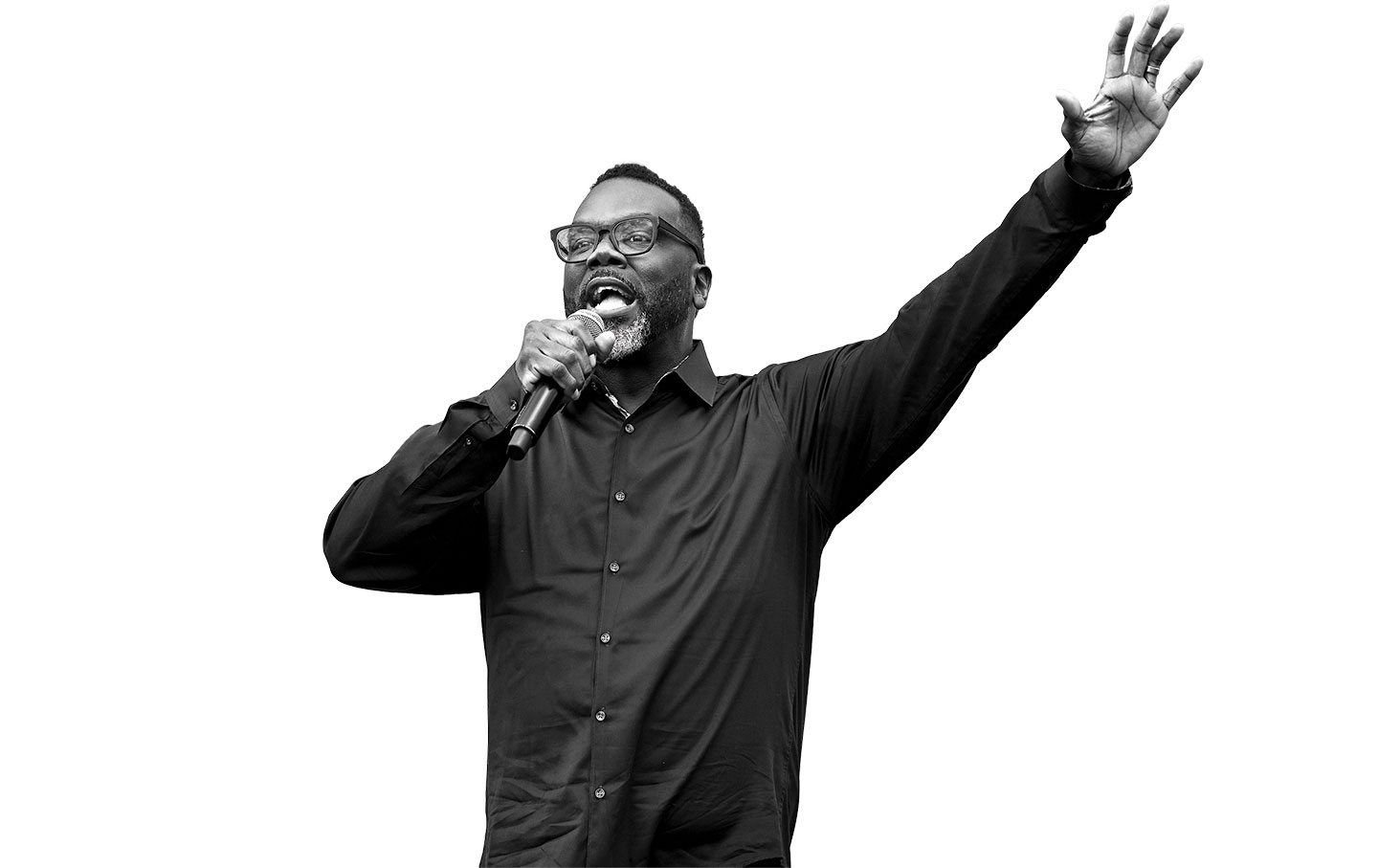
A conversation with the Chicago mayor about his vision for progressive governance and the City Council’s vote calling for a ceasefire in Gaza.
Q&A
/
John Nichols
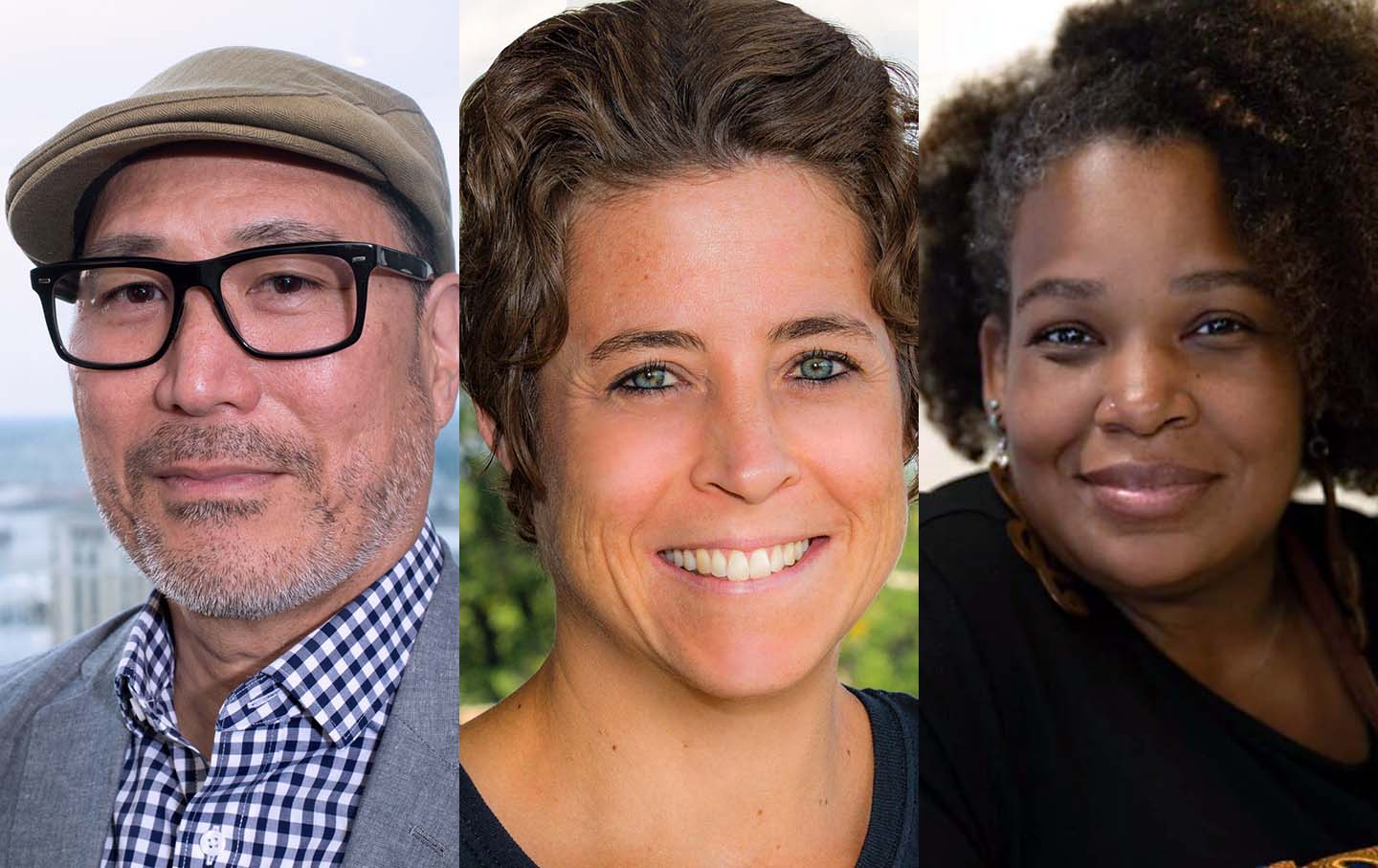
A conversation about MAGA’s militancy and the strategies to protect Democracy.
Q&A
/
Laura Flanders
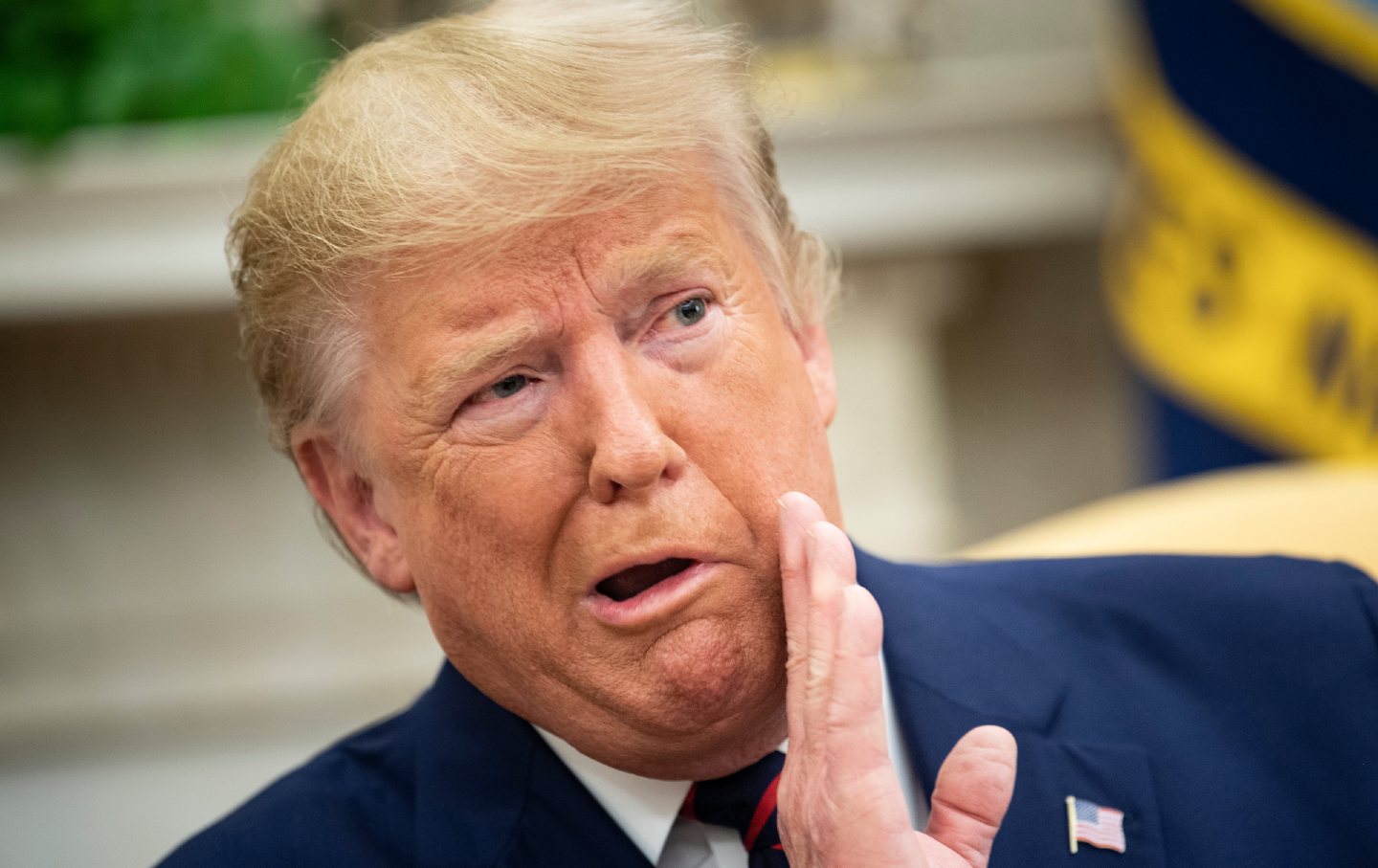
Insecure and contemplating defeat, the former president returns to a familiar script.
Jeet Heer
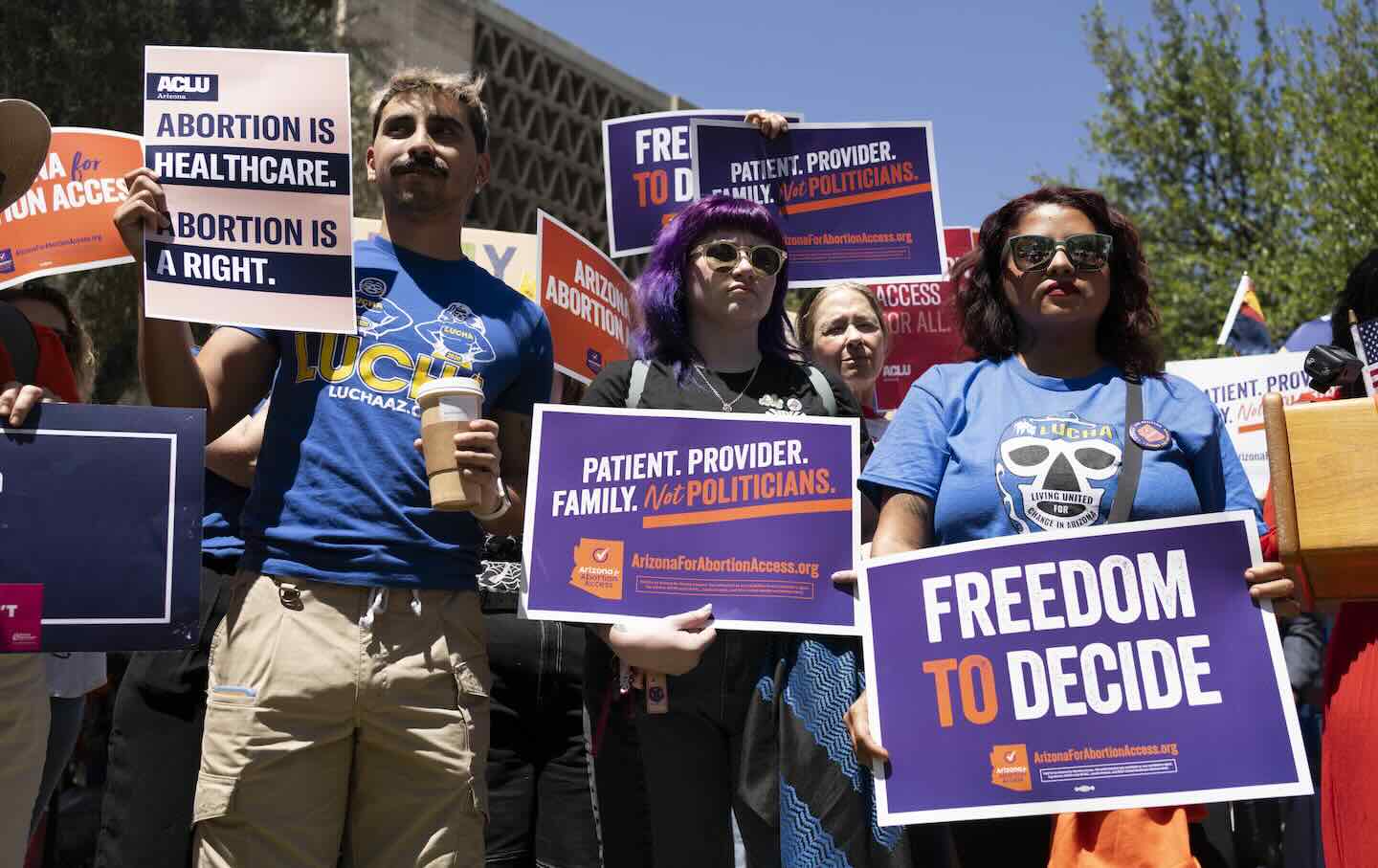
The GOP has been desperately trying—and failing—to shift the public’s attention onto other issues.
Sasha Abramsky
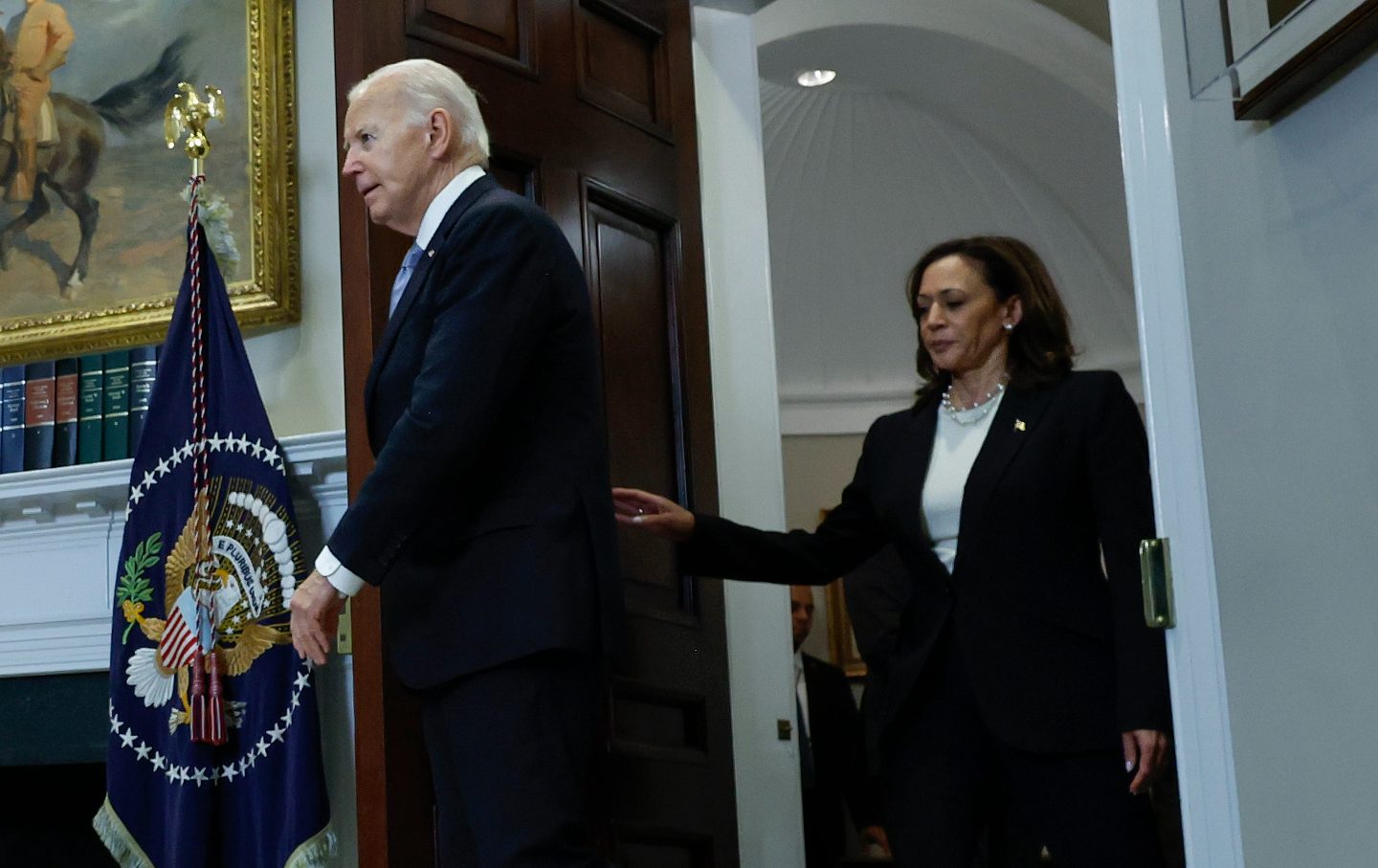
The president’s foreign policy choices in the Middle East and Ukraine have been disasters. Harris needs to make a decisive break.
Amed Khan
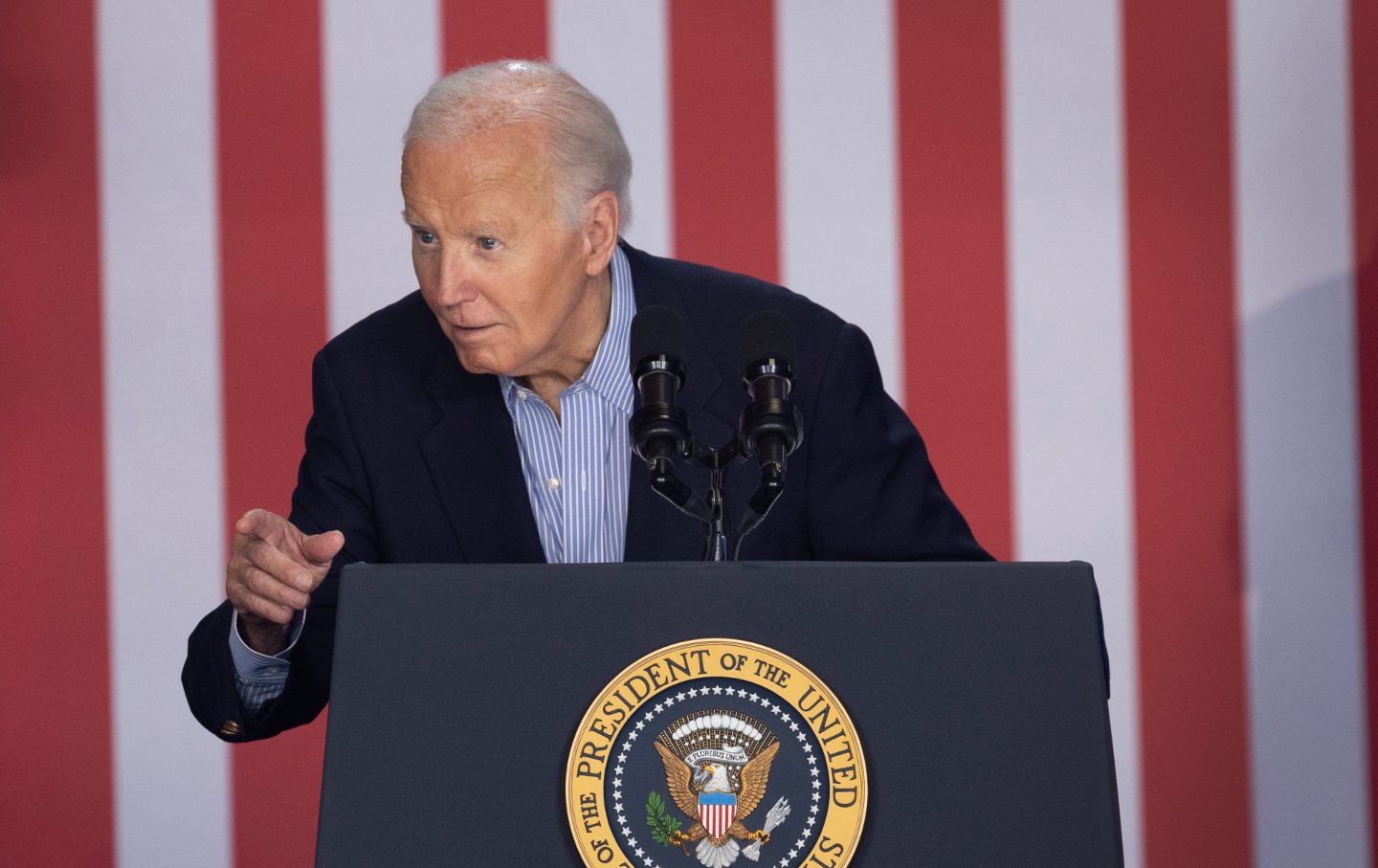
Hey, can we circle back to when many supposedly intelligent people were making one of the most obviously ridiculous political arguments of all time?
Joshua A. Cohen
[ad_2]